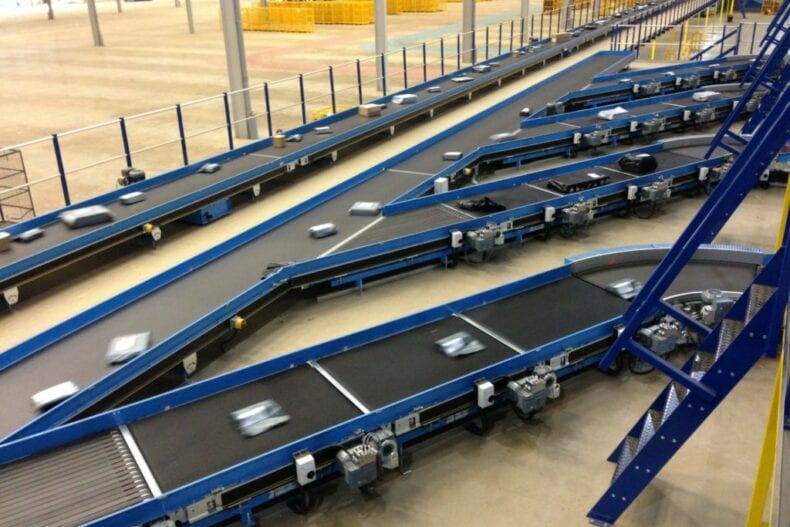Conveyor Belt: Streamlining Material Handling with Efficiency and Precision
When it comes to material handling and streamlining industrial processes, one technological marvel that stands out is the conveyor belt. These automated systems have revolutionized various industries by efficiently transporting goods, reducing manual labor, and optimizing production workflows. In this comprehensive analysis, we will delve into the world of conveyor belts, exploring their types, functions, advantages, and applications. So, fasten your seatbelts as we embark on a journey to uncover the intricacies of this indispensable invention.

Understanding Conveyor Belts:
Conveyor belts are mechanical devices consisting of continuous loops made from various materials. They are designed to move objects from one location to another, effortlessly carrying goods along a predetermined path. Conveyor belts are widely used in industries such as manufacturing, mining, transportation, agriculture, and logistics, to name a few.
Types of Conveyor Belts:
Flat Belt Conveyors:
Overview: Flat belt conveyors consist of a flat belt, typically made of rubber or PVC, that runs on pulleys at each end.
Applications: These conveyors are commonly used for transporting lightweight and medium-weight goods, such as boxes, packages, and components.
Roller Belt Conveyors:
Overview: Roller belt conveyors feature a series of rollers mounted on a frame, with a belt running over them.
Applications: This type of conveyor is suitable for heavy-duty applications, where the weight and size of the items being transported require additional support.
Modular Belt Conveyors:
Overview: Modular belt conveyors utilize interlocking plastic modules to form a moving belt.
Applications: With their enhanced flexibility, these conveyors are ideal for navigating curves and inclines, making them well-suited for industries like food processing and packaging.
Magnetic Belt Conveyors:
Overview: Magnetic belt conveyors use magnets beneath the belt to attract and move ferrous materials.
Applications: These conveyors are primarily used in industries where there is a need to transport magnetic materials, such as in recycling or metalworking processes.
Advantages of Conveyor Belts:
Conveyor belts offer numerous advantages that have contributed to their widespread adoption across industries. Here are some key benefits:
Increased Efficiency:
Conveyor belts automate material handling processes, reducing the need for manual labor and increasing overall efficiency. They can transport large volumes of goods at a consistent speed, significantly boosting productivity.
Enhanced Safety:
By minimizing the need for manual lifting and carrying, conveyor belts reduce the risk of workplace injuries and musculoskeletal disorders. Employees can focus on supervisory tasks, ensuring a safer working environment.
Optimal Space Utilization:
Conveyor belts utilize vertical and horizontal space efficiently, enabling seamless integration into existing production lines. This feature is especially crucial in industries where space is limited.
Versatility:
Conveyor belts can be customized to suit specific industry requirements, allowing for the transportation of diverse materials, including solids, liquids, and even irregularly shaped objects.
Applications of Conveyor Belts:
Manufacturing:
Conveyor belts play a crucial role in manufacturing industries by facilitating the movement of raw materials, work-in-progress items, and finished products along assembly lines.
Mining:
In the mining sector, conveyor belts are used to transport extracted materials such as coal, ore, and minerals, streamlining the extraction process and reducing manual labor.
Warehousing and Logistics:
Conveyor belts enable efficient sorting, loading, and unloading of goods in warehouses and distribution centers, ensuring smooth supply chain operations.
Agriculture:
Conveyor belts are employed in agriculture for tasks such as harvesting, sorting, and packaging of crops. They improve overall efficiency and reduce labor costs in the agricultural sector.
Airport Baggage Handling:
Conveyor belts are extensively utilized in airports to handle luggage, allowing for seamless check-in, baggage transfer, and retrieval processes.
Food Industry:
Conveyor belts find extensive use in the food industry, where hygiene, sanitation, and precision are crucial. They facilitate the movement of ingredients, processing, and packaging of food products.
The conveyor belt has undoubtedly transformed material handling processes across a wide range of industries. By automating and streamlining the movement of goods, these systems have improved efficiency, safety, and productivity. From manufacturing to mining, warehousing to agriculture, conveyor belts have become indispensable tools for modern businesses. With their versatility and customizable features, they continue to evolve, meeting the ever-changing demands of industries worldwide.
So, next time you spot a conveyor belt effortlessly transporting items, take a moment to appreciate the engineering marvel that lies behind its seamless operation.



